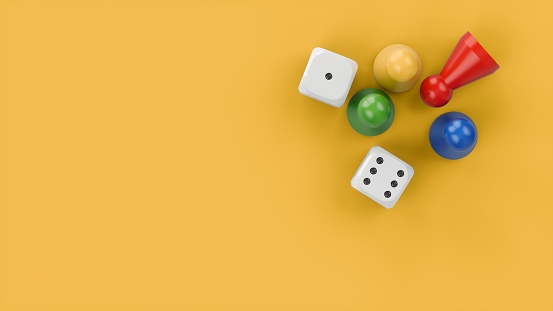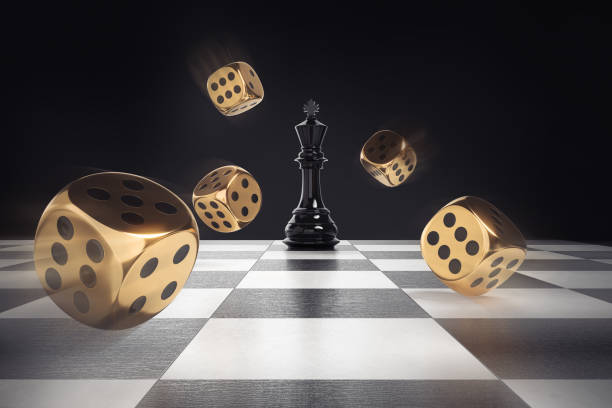Mahjong is a very popular game in many parts of the world. It is especially popular in East Asia, where the game originated.
Mahjong is a four-player game that is similar to the Western game of rummy and is popular in China, Japan, Korea, Taiwan, and other parts of East Asia, and South East Asia, including Singapore, Malaysia, and Thailand.
Mahjong is also popular in other parts of the world, including the United States, where it is often played as a casual game among friends.
The game has become increasingly popular in recent years due to its availability on mobile platforms and online. In addition, Mahjong tournaments are held in some countries, such as China, where it is a professional sport.
Enough with the lauds, let’s get right into understanding more about the game of Mahjong.
I’ll be taking you through the history of Mahjong, traditional mahjong gameplay, mahjong table layout structure, Mahjong Rules For Play, Mahjong legal hands, Mahjong Melds, Mahjong Winning Strategies & responsible playing, and how to play Mahjong For Beginners.
History Of Mahjong
Mahjong is a popular tile-based game that originated in China, believed to have been first played during the Qing dynasty in the 1800s.
Mahjong is a game of strategy and skill, where four players compete against each other to collect the most points (or money) by collecting matching tiles. Players must form winning combinations with their tiles and must use tactics to outwit their opponents. The game requires skill and luck and has become a popular pastime in many countries.
Mahjong has gone through many iterations over the years, with different rules and pieces added to create different versions.
In the 1920s, a westernized version of the game was created, and it quickly became popular in North America and Europe.
Mahjong is often played at home, in casinos, and online today.
Original Mahjong Gameplay
The game of Mahjong is believed to have originated in China during the Qing dynasty (1644-1912). The original rules of the game were quite different from the modern-day version.
In the original version, players had to draw tiles from the wall in order to complete a hand, rather than receiving them all at the beginning of the game.
The game was played with 144 tiles, rather than the 136 that are used today. The extra tiles were used to form special hands, such as the “Heavenly Hand”, which was worth more points than any other hand.
The objective of the game was to earn the most points by collecting sets of tiles, such as pungs and chows. The sets would then be exchanged with the other players in order to complete a winning hand.
Players were not allowed to declare a “Mahjong” (winning the game) until all of the tiles were drawn from the wall. If a player declared a “Mahjong” prematurely, they would be penalized.
Also, there was no concept of “dora” or “ura dora” in the original version of Mahjong. This means that players had to rely solely on their skill and luck to win the game.
Mahjong Table Layout Structure
The traditional Mahjong table layout consists of three players seated opposite each other in a square. The players are arranged such that each player is facing the other.
The table is then divided into four sections (called “winds”) with each player having their own section. In the center of the table is a stack of tiles known as the wall.
The wall is divided into four sections, each representing one of the four winds: East, South, West, and North. Each section of the wall contains 34 tiles.
Each player takes 13 tiles from their wall and arranges them in two rows of seven tiles each, with the topmost row being called the “upper row” and the bottom row being called the “lower row”.
The remaining tiles from each section of the wall are then placed in the center of the table. These are called the “dead wall” and are not used in the game.
The four players then take turns drawing and discarding tiles, with the goal of creating sets of matching tiles and eventually winning the game.
Mahjong Rules For Play
The Mahjong Rules For Play include
- Choose a set of Mahjong tiles.
- All participants should be seated around the table.
- Shuffle the tiles and arrange them into four walls, each wall consisting of two rows of 18 tiles.
- Players should decide on the dealer for the game and the seating arrangement.
- The dealer shuffles the tiles and deals out 13 tiles to each player.
- The dealer then places the remaining tiles in the center of the table and turns over the first tile. This is the start of the game.
- Players should look at their tiles and arrange them in sets of three or four tiles in order to create melds.
- Players should then try to match their melds to the revealed starting tile.
- Play begins with the player to the right of the dealer, and continues in a clockwise direction.
- On a player’s turn, they can draw one tile from the reserve pile or declare a win by claiming the discard pile.
- If a player declares a win, they must then show the winning hand to the other players.
- The game continues until a player has won or the wall of tiles runs out.
- The winner of the game is the player with the most points. Points are accumulated by winning hands and claiming bonus tiles.
Mahjong Legal Hand
A legal Mahjong hand consists of four sets, either three of a kind and a pair (known as a “pung”) or four of a kind (known as a “kong”), and at least one pair of identical tiles, known as a “head.”
The four sets must all be of the same suit or the same type of tiles (i.e. all circles, all numbers, all characters, or all winds).
A legal hand in Mahjong must also contain at least one tile from each of the four suits or tile types.
For example, a legal Mahjong hand could contain two pungs of characters, a kong of circles, and two pairs of winds.
Mahjong Melds
Mahjong melds are combinations of tiles that are used in the game of Mahjong. They are the main way of scoring points in the game of Mahjong.
Mahjong melds are sets of three or four tiles that match either numerically or in the suit, depending on the variant.
In most variants, there are three types of mahjong melds: Chow, Pung, and Kong.
Chow: A Chow is a meld consisting of three tiles in a sequence.
For example, a Chow meld could be made up of three tiles of the same suit in numerical order, such as 2-3-4, 5-6-7, or 9-1-2.
Pung: A Pung is a meld consisting of three tiles of the same rank but different suits.
For example, a Pung meld could be made up of three tiles of the same rank but different suits, such as 1-1-1 (where each tile is in a different suit).
Kong: A Kong is a meld consisting of four tiles of the same rank but different suits.
For example, a Kong meld could be made up of four tiles of the same rank but different suits, such as 2-2-2-2 (where each tile is in a different suit).
These melds can be used to score points in Mahjong. In most variants, points are awarded for melds as well as for winning hands.
These melds are the foundation of the game and are used to score points and win the game.
Mahjong Winning Strategies & Responsible Playing
The following steps can be followed to increase your chances of winning as well as play responsibly in a game of Mahjong.
- Learn the Rules: Before you start playing, make sure you have a firm understanding of the rules of Mahjong. You won’t be able to play your best if you don’t know the rules!
- Pay Attention to the Table: Observe the table and the tiles that are exposed, as well as the tiles your opponents are discarding. This will give you an idea of what tiles you should be collecting.
- Use Your Discards Wisely: Keep track of the tiles you discard. You might be able to make use of some of your discard tiles if your opponents pick them up.
- Make the Most of Your Moves: Your moves should be strategic. Look for opportunities to build up your hand and create a winning combination.
- Focus on Defense: Don’t forget to defend against your opponents. If you can prevent them from winning, it increases your chances of winning the game.
- Be Patient: Don’t be too eager in your gameplay. Take your time and think through each move carefully.
- Take Opportunities: Pay attention to your opponent’s moves and take advantage of opportunities when they arise.
- Don’t Take Unnecessary Risks: If you are uncertain about a move, it is always better to play it safe. Don’t take unnecessary risks that could put you at a disadvantage.
- Stay Calm: Don’t get too worked up if things don’t go your way. Staying calm and focused is key to playing your best.
How To Play Mahjong For Beginners
Follow the following steps to play Mahjong, if you are a beginner,
- Purchase a Mahjong set. A Mahjong set typically comes with four racks, 144 tiles, and dice.
- Understand the basic rules. Mahjong is played with four players and is a game of skill, strategy, and calculation. The objective is to build four sets and a pair, as well as a winning hand.
- Make sure all players are familiar with the Mahjong tile names and their corresponding images. Mahjong tiles are divided into three main categories: Bamboo, Character, and Dot.
- Arrange the Mahjong tiles into the “wall”. All players should sit on the same side of the table and the wall should be built in a square shape.
- Shuffle the tiles. All players should take turns shuffling the tiles.
- Determine the dealer by having each player roll the dice. The highest roller will become the dealer.
- Begin sealing the tiles. The dealer will begin dealing with the tiles in a counterclockwise motion, starting with the player to their right. Each player will receive 13 tiles.
- Break the wall. The dealer will break the wall by selecting and discarding a tile.
- Begin playing. Players will take turns selecting and discarding tiles, trying to form the four sets and a pair.
- End the game. The first player to form the four sets and a pair will win the game.
Conclusion
It’s important to remember that Mahjong is a game and should be played for fun and entertainment.
Winning and losing are just part of the game and shouldn’t be taken too seriously.
With that said, it’s still important to practice and strive to improve your skills, otherwise, you won’t be able to enjoy the game as much as you could.




